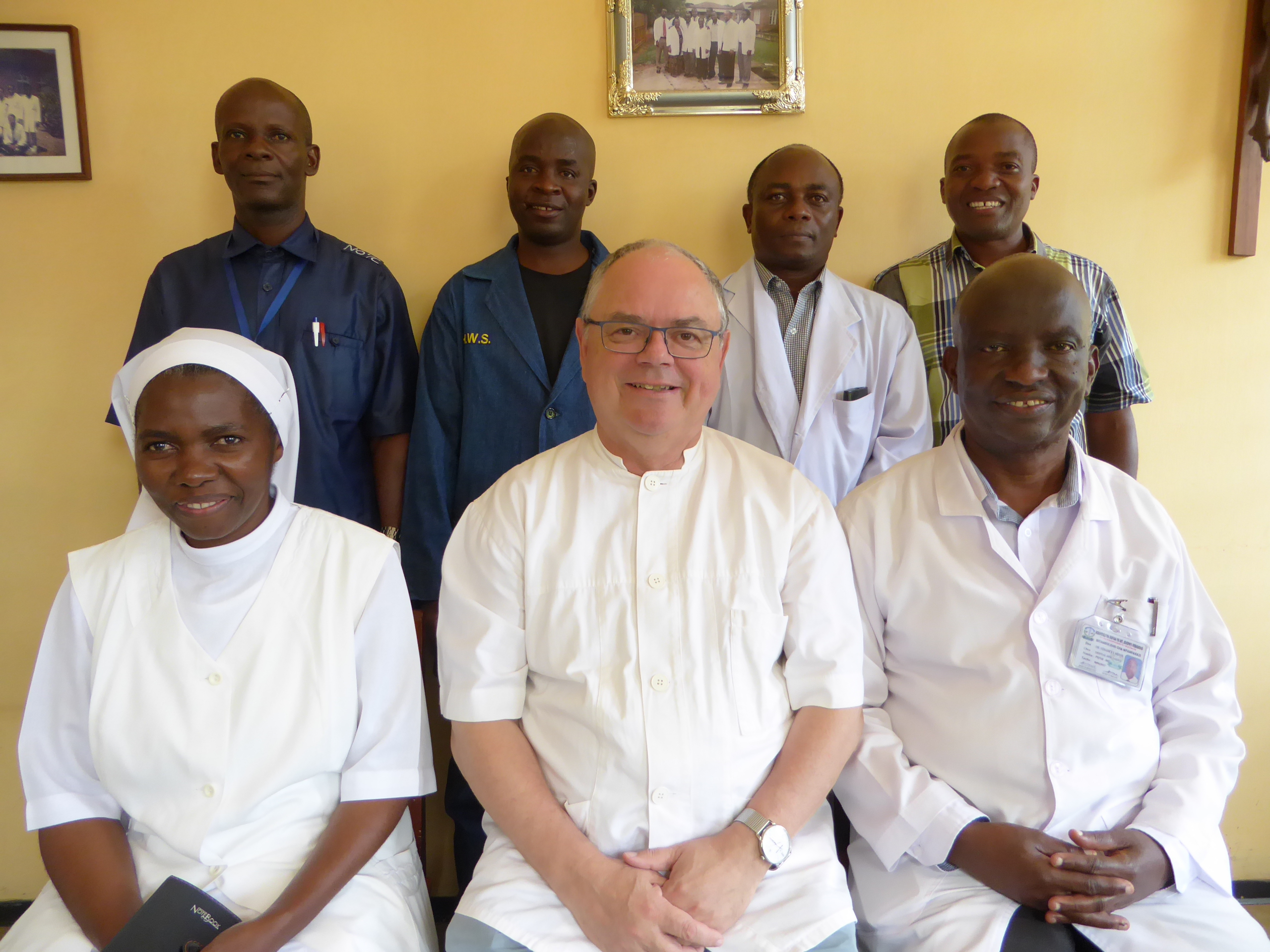Brother Ansgar is a missionary doctor and heads up St. Joseph’s Hospital in Peramiho. He has spent many years in Tanzania and helped set up the foundation’s first project – the construction of a children’s ward. The 68-year-old is now in charge of a publishing unit called Vier Türme (‘Four Towers’) at Münsterschwarzach Abbey. As a physician, he has been closely involved in issues surrounding the coronavirus and compares the current situation in Germany with what happens in East Africa.
Hello Brother Ansgar. How do you see the current coronavirus crisis, both here and in Africa?
People are becoming infected here much more quickly than was expected; now an increasing number of younger people are being affected. What makes this situation difficult for us in Germany is that we’ve had very little experience with epidemics, so we can’t build on previous experience as is the case in lots of African countries. I believe we need to get a much better grip on organisational aspects. We’re investing a lot of energy and resources in the wrong things. Medical practice in Germany is based on individual treatment, which is extremely resource-intensive. In Africa, by contrast, more is achieved with fewer resources.
Are African countries better prepared for the coronavirus?
They’ve experienced cholera and the ebolavirus, so countries like Uganda and Rwanda have a better understanding of epidemics. For example in Uganda they’ve already had
cases of the ebolavirus, but they managed to prevent widespread infection by introducing the right measures, like routinely checking people’s temperatures at the border. Also, there was a cholera epidemic in Rwanda twenty years ago when refugees started moving around, and they survived that situation well. These countries are extremely well organised when it comes to combating epidemics.
According to the official numbers, there have been far fewer infections in Africa than here. Why are fewer people affected by the coronavirus there?
Some people are wondering if the virus is less prone to spreading in tropical countries due to the heat, although that’s not been proven yet. But maybe it gives us reason to have more hope!
One reason it’s spreading out more slowly certainly has to be that people in rural areas are less mobile than they are here. That already limits the possibility of transmission. Then there’s also the fact that more than half of the population in East Africa are under the age of 18 and they’re not the high-risk group. Also, Africans have extremely high immunoglobulin levels in their blood, probably because they had to survive lots of infections during childhood. That’s perhaps one reason why they don’t have bad flu infections in Africa like we do. So as a result, maybe the population there is also protected better from COVID-19 infections.
But I do see one potential high-risk scenario: in Tanzania around five per cent of the population is infected with HIV, so that’s 2.5 million Tanzanians. Because their immune system is already weakened, they could already be particularly vulnerable to the coronavirus. There’s no research into this yet, but it’s quite conceivable that there will be more deaths in this section of the population.
You are still the official director of the hospital in Peramiho. How often do you make it to Tanzania, and what’s the situation like there in these times of COVID-19?
I go there twice a year and also stay in close contact with the doctors there at other times. St. Joseph’s Hospital is still running as normal, but preparations are being made. For example, rooms have already been put aside for possible coronavirus cases. Of course the government is also introducing measures to prevent the spread of the virus. So for instance the football cup I endowed, the Ansgar Cup, has been cancelled by the authorities.
And what impact is the virus having on the PATRIZIA Children’s Centers in Tanzania?
There’s good news on that front. The children have virtually no symptoms, even if they’ve got the virus. We’ve had no fatalities among the children. Despite this, schools have also been shut down in Tanzania. That said, this is not about protecting children, but their parents and society in general because as carriers of the virus, children can of course also infect others.
What do you see as the biggest challenges posed by the virus in the long term?
The economic consequences, without a doubt. And this will affect poor countries much more than us, even if they have fewer infections. Lots of countries will be particularly badly affected by the loss of tourists. Tanzania is already noticing the effects of this in economic terms. Domestic flights have been suspended due to a lack of passengers. There’s concern about medical supplies running out. That’s quite possible after manufacturing had to halted in India and China. Transportation has also been reduced.
Brother Ansgar: physician, missionary, publishing director – and advisory board member
Brother Ansgar studied medicine and worked as a missionary and doctor in Africa for 16 years from 1987 until 2003. He was responsible for St. Joseph’s Hospital in Peramiho in the south-west of Tanzania. It was here that the PATRIZIA Children Foundation implemented its very first project with the building of a children’s ward in 2002. Brother Ansgar provided input on the concept and expansion of the children’s hospital in Peramiho from the very beginning. On returning to Germany, he was appointed missionary procurator and oversaw international projects for the Missionary Benedictines of St. Ottilien. In 2019, he became director of Vier Türme (‘Four Towers’), the publishing unit at Münsterschwarzach Abbey. Brother Ansgar has been a member and supporter of the PATRIZIA Children Foundation advisory board for four years.



